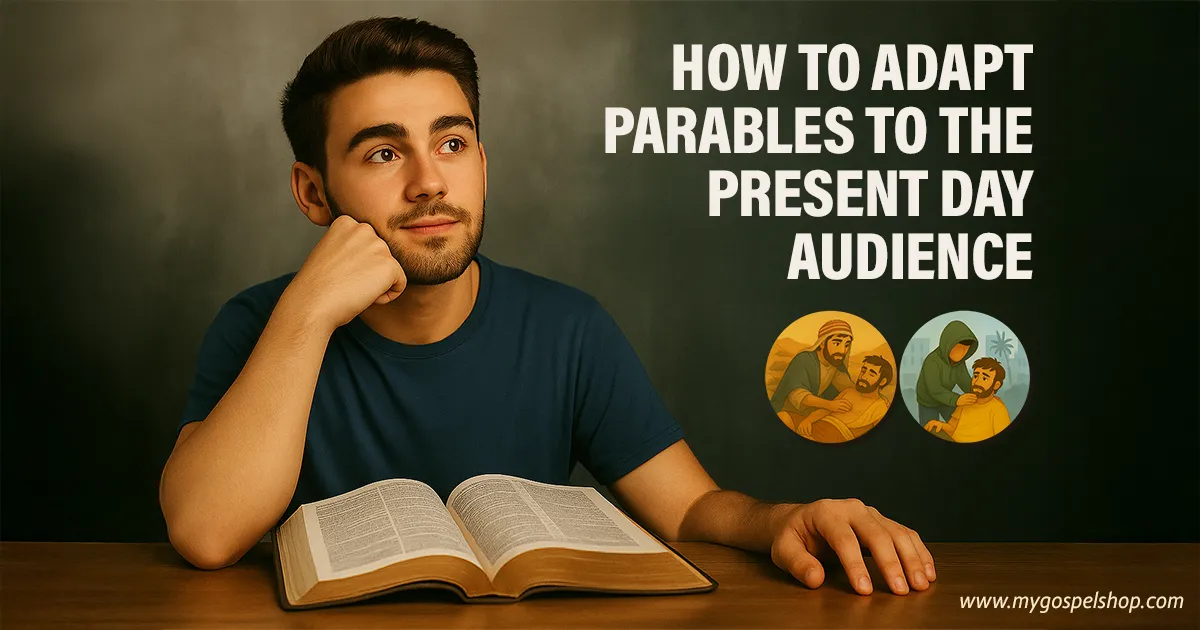🟨 Introduction
The parables of Jesus were profound messages wrapped in everyday stories. In His context, He spoke of seeds, fishermen, farmers, and banquets—relatable images for the Jewish people of the first century. However, for these parables to continue impacting lives today, teachers must understand not only the original message but also how to translate it into the language and setting of their current audience.
This article is a practical guide for teachers, preachers, and leaders who want to preserve the transformative power of the parables when teaching in different contexts.
🟧 1. Deeply Understand the Original Parable
Before adapting a parable, you must fully grasp its original context:
- What was the central conflict or situation?
- Who was the intended audience?
- What were the cultural images and language Jesus used?
- What is the clear lesson or moral that must never be lost?
👉 Example: The parable of the Prodigal Son (Luke 15) speaks of restoration, grace, and repentance. That truth does not change—but the cultural elements can.
🟦 2. Identify the Universal Teaching
Every parable holds a timeless spiritual truth. That’s the core message you must preserve, even if the surrounding details change.
💡 Ask yourself:
- What does this parable teach about God, humanity, or the Kingdom?
- What biblical principle does it highlight?
- How would Jesus teach this same truth in today’s world?
🟩 3. Know Your Audience: Who Are You Teaching?
A key step in adapting parables is truly understanding your audience:
- Are they children, teens, adults, new believers, or mature leaders?
- What cultural references do they understand?
- What struggles do they face today?
- How do they think, speak, and connect?
👉 Explaining the parable of the sower to 7-year-olds in Sunday school is very different from teaching it to urban church leaders.
🟥 4. Adapt the Story Without Losing the Truth
This is where the magic happens: you recreate the story, updating it to your audience’s world, without changing the biblical message.
🎯 Replace elements:
- The sower might be a social media influencer spreading a message.
- The prodigal son could be a teen who leaves church searching for freedom.
- The lost sheep could be a friend who walked away from God and now faces crisis.
👩🏫 Example for youth:
“Imagine a teenager blocking their family and walking away to live on their own terms. They spend everything, end up alone, and in a moment of desperation… they remember their parents’ love. Would they return? Would they be received?”
🎯 The message is the same. The setting is new.
🟨 5. Use Modern, Visual, and Emotional Examples
A well-adapted parable should:
- Relate to common experiences
- Use accessible language
- Stir emotions
- Have a clear and impactful ending
Make use of:
- Familiar daily images
- Characters they can identify with
- Real-life situations that reflect the parable’s message
🟪 6. Always Close with Spiritual Clarity
Never forget to end with the eternal and biblical truth. Let the story connect—but let the truth transform.
💬 Example:
“Just like the father in the story forgave unconditionally, God is waiting for you. He loves you and wants to restore you. Will you return to Him?”
7. Reinforce, don’t replace
To avoid altering the original meaning of the parable, you can always tell the parable in its original form first, and then retell it in a modern context, making sure no key details are left out. Adapting a parable to today’s reality does not mean that ancient parables are outdated — it’s to provide an additional layer of understanding to what has already been shared.
A helpful strategy is to invite reflection with questions like:
“What if this happened to us today?” or “Can you imagine this story in our current world?”
This builds connection without losing the biblical essence.
🔵 Conclusion
Adapting parables to today’s reality doesn’t mean altering God’s Word—it means making it more understandable and relatable. That’s what Jesus did in His time, and what we must do today as faithful and creative teachers.
A good lesson doesn’t just inform—it transforms.

